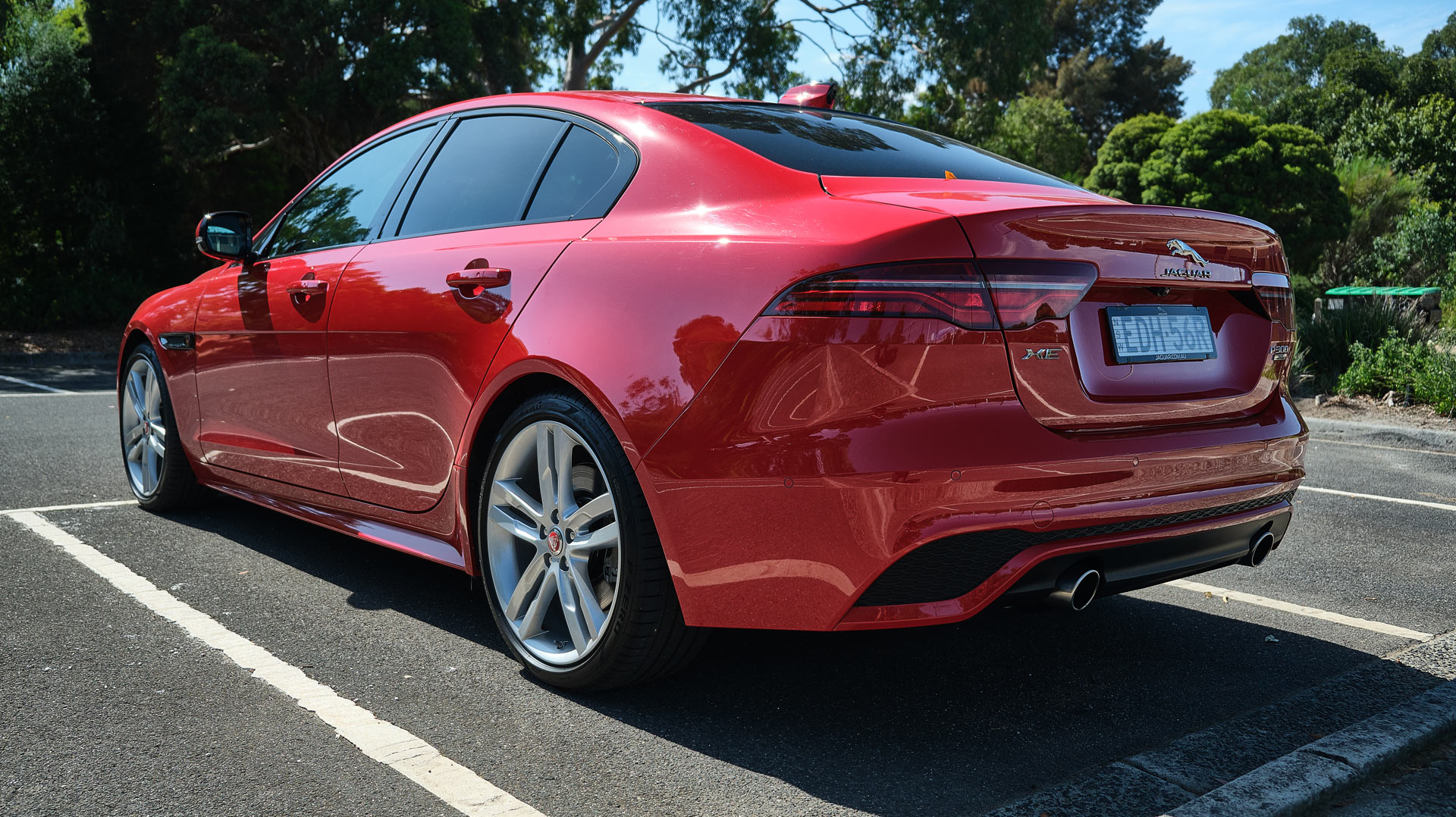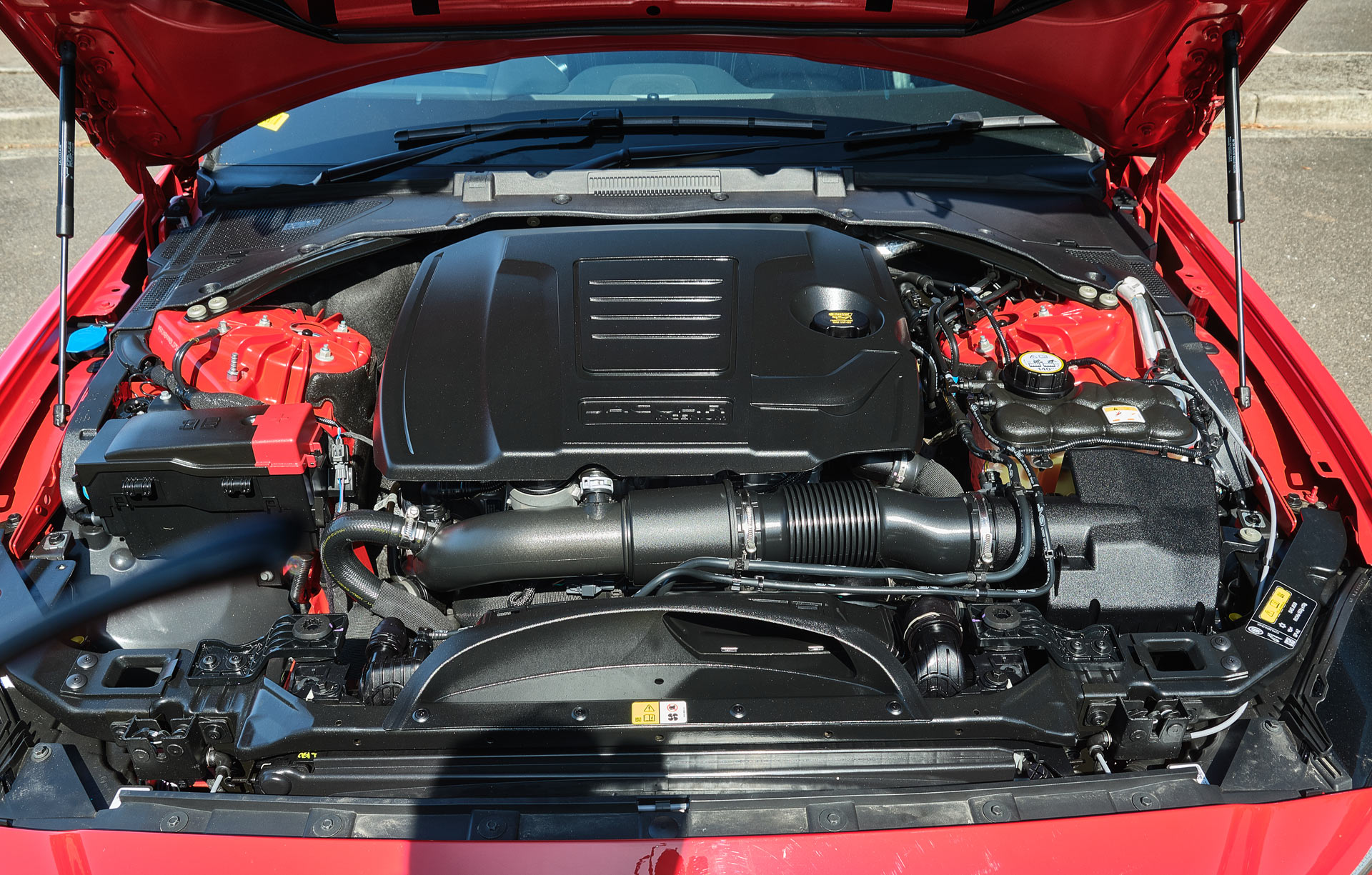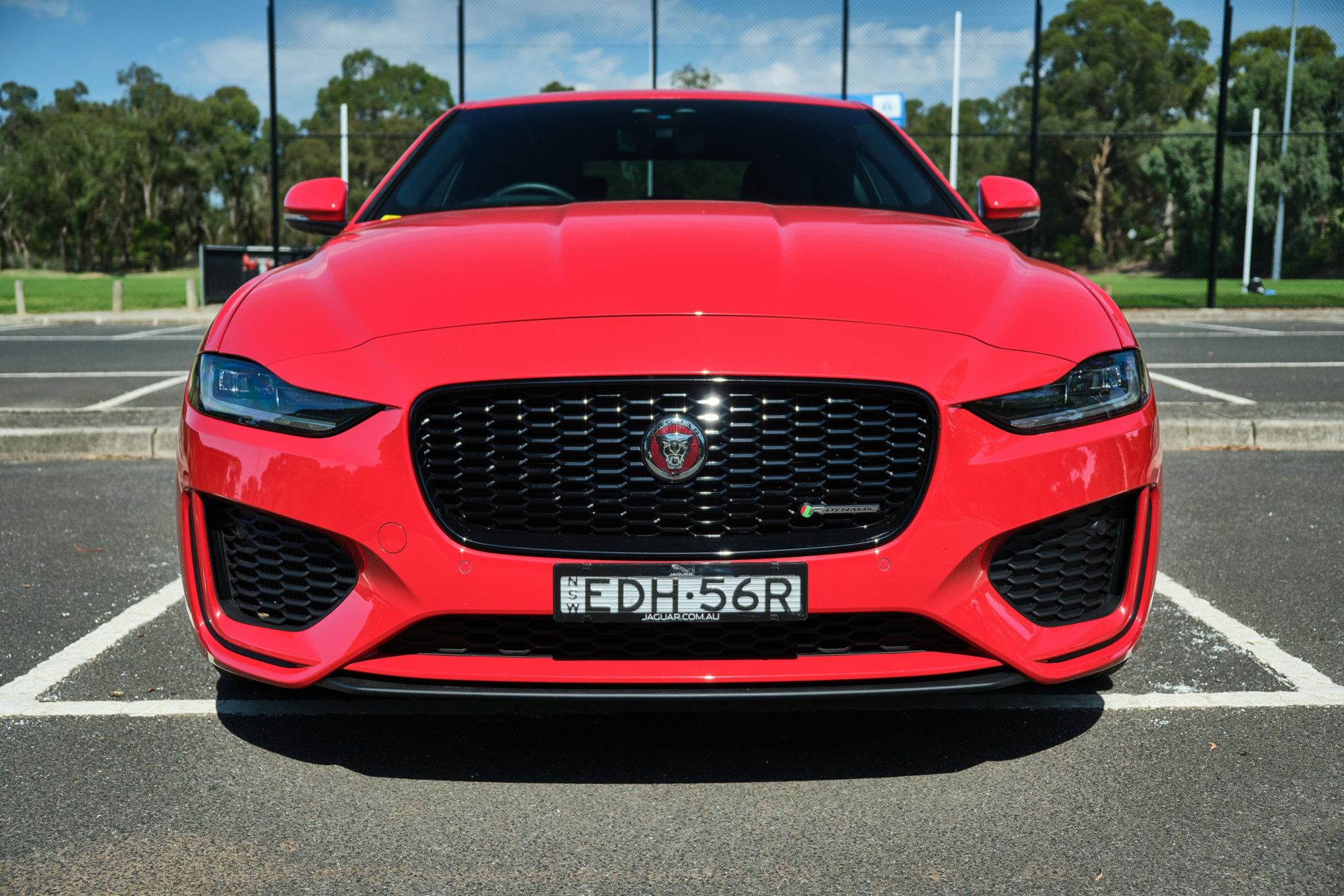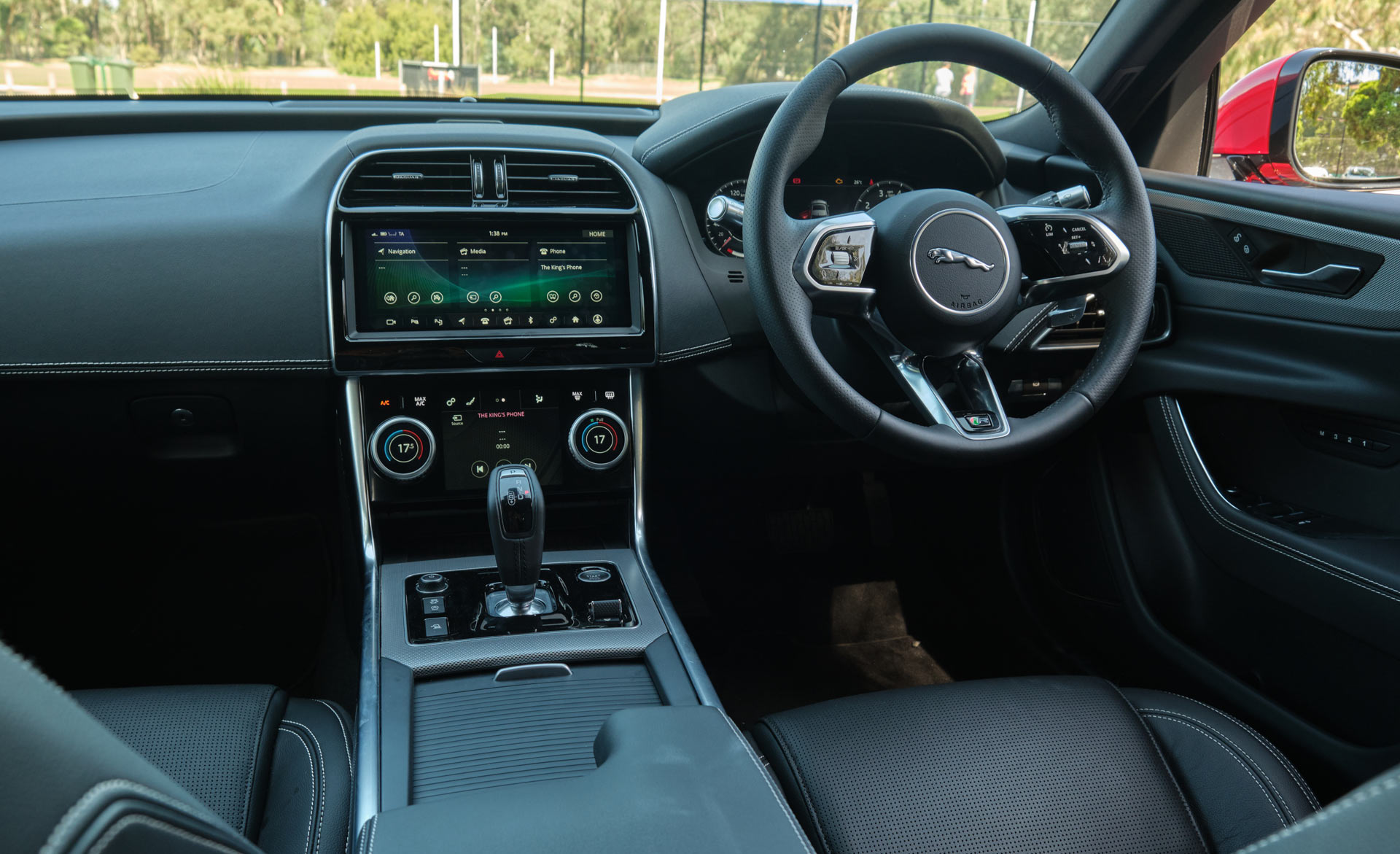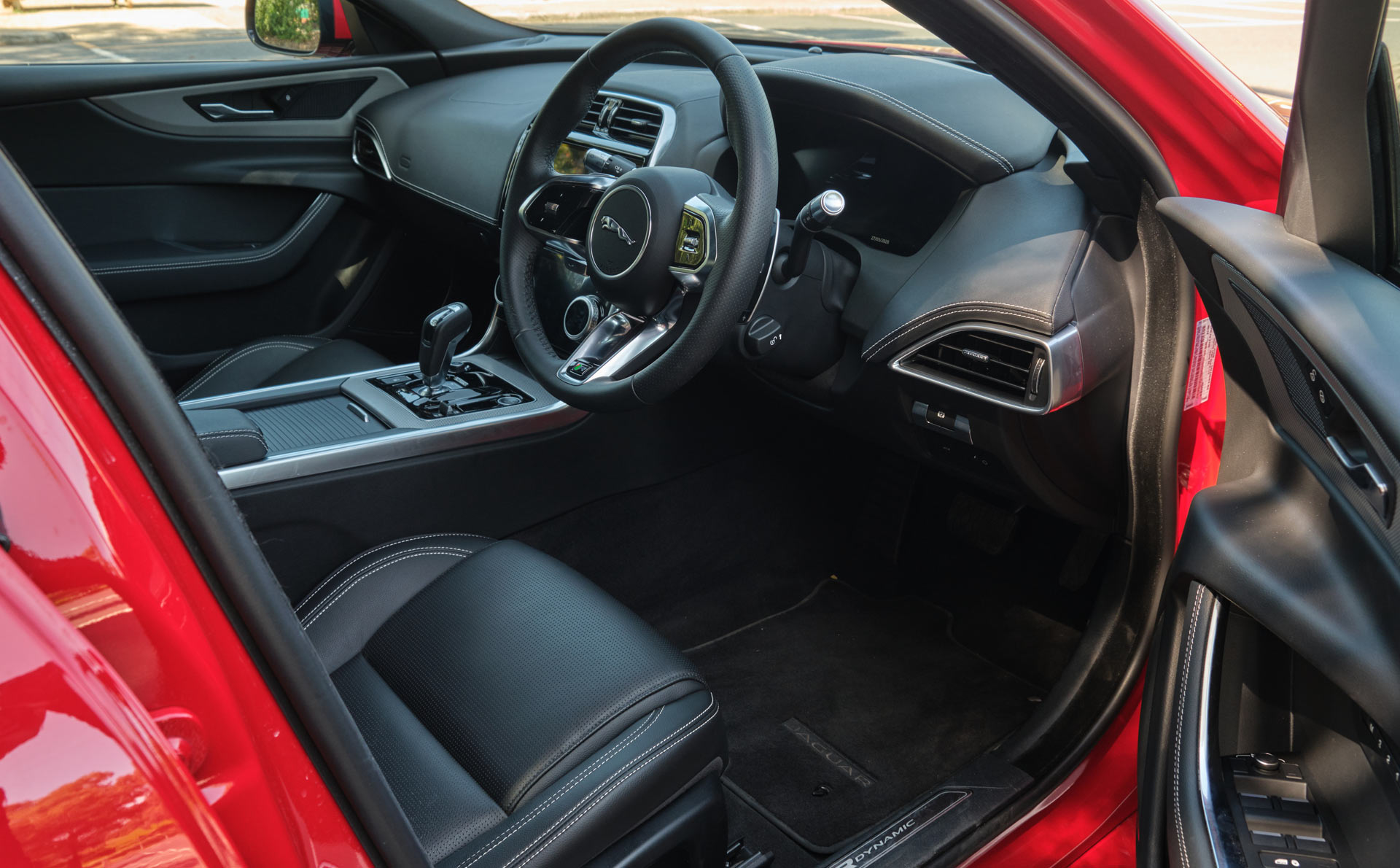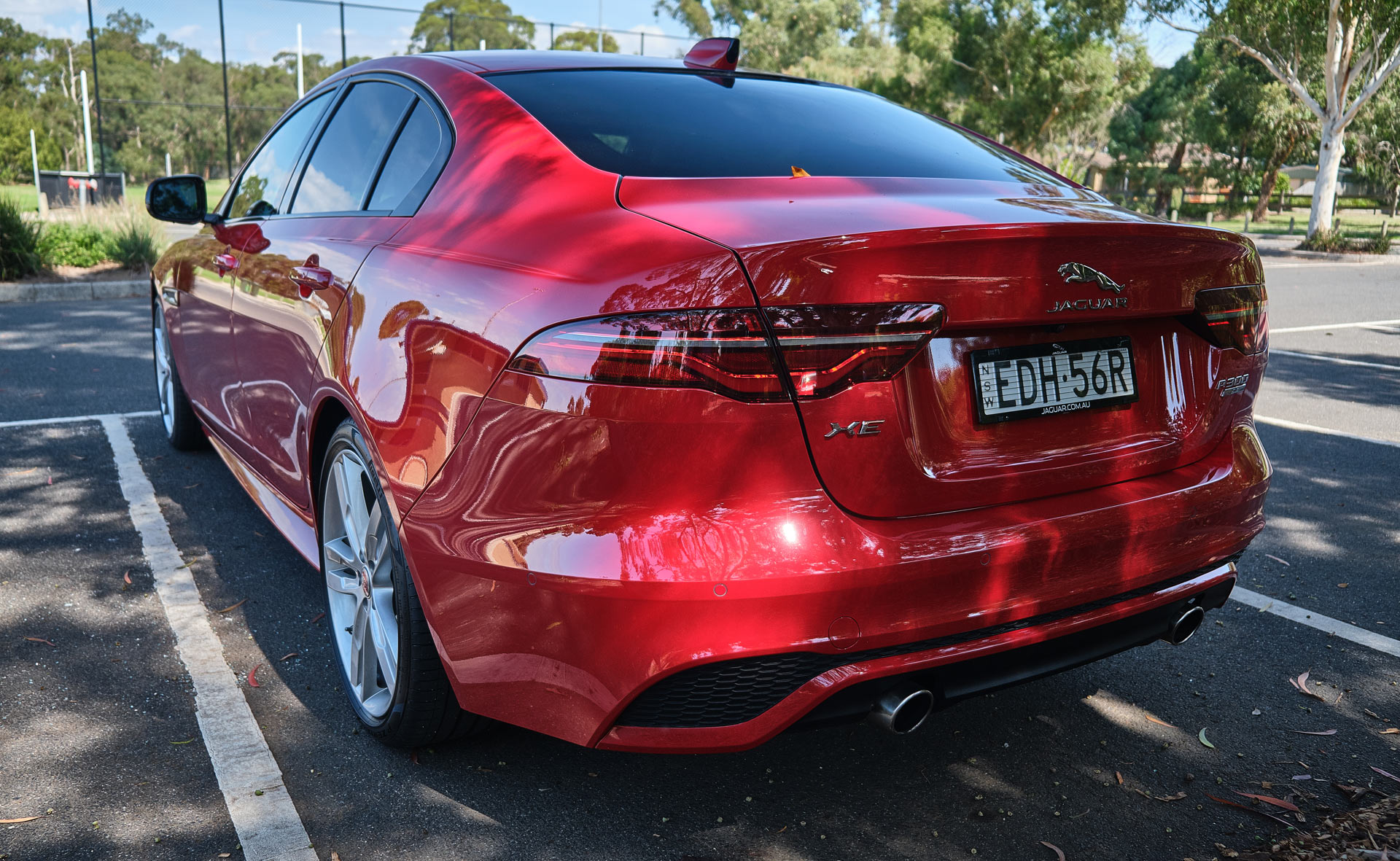Last year, Jaguar Australia made the intriguing decision to shrink the XE range from 14 different models down to just two so, if anything, you’d hope that the remaining two variants offered to customers are pretty good. We recently spent a week with the range-topping Jaguar XE R-Dynamic P300 HSE to find out if that holds true.
Powering the sports sedan is a 2.0-liter turbocharged four-cylinder engine with an impressive 221 kW (296 hp) and 400 Nm (295 lb-ft) of torque. This same engine also comes standard with the slightly-cheaper XE R-Dynamic P300 SE and is coupled exclusively to an eight-speed automatic transmission sending powering to the rear wheels.
Also Read: Is The 2020 Kia Stinger GT With The Twin-Turbo V6 The Sports Sedan Of The Moment?
Selling a vehicle with just one engine across the entire range is not something you see very often, particularly nowadays. It is especially odd in the premium segment where the XE competes. For example, the BMW 3-Series is sold in 320i, 320d, 330i, 330e, M340i xDrive, and M3 variations in Australia and most have bespoke engines. For example, the 320i and 330i have a 2.0-liter turbo-four with different power levels, the 330e mates this turbo-four with an electric motor, and the M340i xDrive utilizes a 3.0-liter turbocharged straight-six. The M3 then uses a 3.0-liter twin-turbo straight-six.
So, how does the Jaguar XE’s sole powertrain perform? Very well.
Figures of 221 kW (296 hp) and 400 Nm (295 lb-ft) are nothing to be sneezed at and make for a compelling package. On startup, the engine roars into life before settling into a pleasant purr fitting of the Jaguar badge. At low speeds, the engine is refined and quiet, so much so that you often forget it displaces just 2.0-liters. What’s more, it’s easy to forget than the engine is turbocharged as the power delivery is smooth and consistent throughout the rev range.
Sporty and fun
When you build up a bit more speed, the engine really comes into its own. Jaguar claims the sedan will hit 100 km/h (62 mph) in 5.9 seconds and we’ve got no doubt such a time could be achieved with relatively little fuss. There is no launch control mode but you don’t really need it as the XE gets off the line with very little wheelspin, even with the traction and stability control systems switched off. Acceleration matches up nicely against the likes of the BMW 330i and Mercedes-Benz C300 that both have 2.0-liter turbo-fours and hit 100 km/h in 5.8 and 5.9 seconds respectively.
Those looking to make the most of the available performance would be wise the drive the XE R-Dynamic HSE around in ‘Dynamic’ mode as this tightens everything up and makes it noticeably louder with some of the sound coming through the speakers.
An agile kitty
When you reach some corners, the car immediately inspires confidence that you can push it harder and harder. This is particularly evident with sharp turn-in response and great grip from the front end. With understeer not an issue thanks to Pirelli P Zeros measuring 225/40R19, you can push the car into corners and slowly feel the rear end break loose in a predictable and linear manner.
Claimed fuel consumption sits at 6.7 liters/100km (equal to 35.1 mpg US / 42.2 mpg UK) over the combined cycle. We averaged nearer 9.0-liters (26.1 mpg US / 31/4 mpg UK) in a mix of urban and highway driving.
The engine and driving experience prove that Jaguar wasn’t completely crazy when it decided to offer just one powertrain in the XE. But what about the rest of the experience?
Our test car was painted in a lovely shade of Caldera Red and as the 2020 XE received some minor visual tweaks, it looks even better than before. The front is particularly nice to look at thanks to the sexy headlights and blacked-out grille. We are also fans of how the XE looks from the rear but think it could be better if the dual tailpipes were pushed out to the extremities of the bumper and not so central.
Premium fit and finish
Inside, the facelifted XE underwent a series of alterations and is now better than before. Most notably, many of the same parts from the all-electric I-Pace have found their way into the cabin. For example, there is now a secondary touch display that can be used to adjust the climate settings. In addition, there are new rotary dials and buttons for the climate control and heated seats. Push the climate button in and you are presented with the heated seat adjustment. Pull the climate dial towards you and you can adjust the fan speed. It takes a little while to get used to but is a visually-appealing system.
The XE also sports a 10.0-inch main infotainment system. It is easy to understand and operate and has a very clean and stylish design. Unfortunately, it does lag and it’s not uncommon to have to wait a full second after touching the screen for anything to happen. Also found inside is an all-digital gauge cluster and Jaguar Land Rover’s ClearSight Interior Rear View Mirror that uses a camera mounted on the roof to display crystal clear images of what’s going on behind you. The system is so nice to use that I never actually flipped it back into a traditional mirror. Qi wireless charging is also present.
The driving position is sound and the front seats can be adjusted very low while also offering good lumbar support. Similarly, the sporty three-spoke steering wheel offers a good range of adjustment and is very nice to use.
Look at the XE from the outside and you could be forgiven for thinking the low-slung roofline would only offer enough headroom for small children. Much to my surprise, there is adequate space back there even for us taller folks. With that being said, the legroom can be cramped if the front seats are pushed back with the XE offering overall a little less space than most of its rivals in this segment. .
Good looks and performance don’t have to be mutually exclusive
Our test car came complete with a host of options. These included the AU$2,090 (US$1,327) Dynamic handling pack with the configurable dynamics and adaptive dynamics systems, red brake calipers, and a rear spoiler. It also had the AU$1,710 (US$1,086) Technology Pack with the aforementioned digital rear-view mirror, solar attenuating windscreen, wireless device charging, and a Head-Up Display.
Other options included the AU$1,350 (US$857) Matrix LED headlights, AU$1,300 (US$825) 20-inch wheels, AU$840 (US$533) black exterior pack, AU$700 (US$444) Caldera Red paint, AU$650 (US$412) privacy glass, and AU$460 (US$292) 40:20:40 folding rear seats with a center armrest. These options brought the car’s price up to AU$81,040 (US$51,454) plus on-road costs.
While local Jaguar XE buyers don’t have the large array of variants they once did, Jaguar has done a fine job producing a good all-rounder that’s competitive with its rivals.
